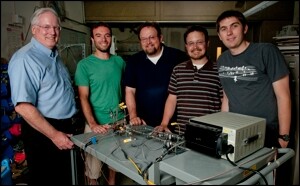Rocket engines are generally not thought of as being environmentally-friendly, but thanks to a newly-developed process, we may someday see them neutralizing the emissions from wastewater treatment plants. The same process would also see those plants generating their own power, thus meaning they would be both energy-neutral and emissions-free. Developed by two engineers at Stanford University, the system starts with the formation of nitrous oxide (N2O) and methane gas - something that treatment plants traditionally try to avoid.
Usually, air is pumped into wastewater sludge to boost its oxygen content. This promotes aerobic bacteria that convert the sludge’s sugars and other organic materials into harmless nitrogen gas. In the Stanford process, the sludge’s oxygen content is kept low, to favor anaerobic N2O-producing bacteria. The N2O bacteria consume relatively little in the way of organic material, leaving more for other anaerobic microbes, which consume and convert it into methane gas. That gas can then be used to power the plant, which will already have operating costs about half that of a regular plant, due to the fact that it isn’t pumping air into its sludge.
"Normally, we want to discourage these gases from forming," said Craig Criddle, a professor of civil and environmental engineering and senior fellow at the Woods Institute for the Environment at Stanford. "But by encouraging the formation of nitrous oxide, we can remove harmful nitrogen from the water and simultaneously increase methane production for use as fuel."

A big problem with N2O, however, is that it’s a nasty greenhouse gas. That’s where the rocket science comes in. Brian Cantwell, a professor of aeronautics and astronautics at Stanford, has created clean-burning rocket thrusters that run on N2O. "We wondered whether nitrous oxide could be exploited as an emissions-free source of energy," Cantwell said. "Since the product of the decomposition reaction is simply oxygen-enriched air, energy is generated with zero production of greenhouse gas. But first we needed to find a cheap, plentiful source of nitrous oxide."
That source, of course, would be the wastewater treatment plants. According to Cantwell, a single thruster the size of a basketball could potentially consume every ounce of nitrous oxide produced at a typical plant. The heat produced by that thruster, along with the methane gas, could be used to power the plant. Self-powered plants could make a huge difference in third world countries, where power grids are severely limited.
Criddle and Cantwell are now looking towards their process being used not only in wastewater treatment plants, but also for purposes such as extracting energy from nitrate-contaminated groundwater beneath fertilized agricultural fields.
"If successful, this technology could be a game changer, with the potential for worldwide impact on several fronts," Criddle said.





